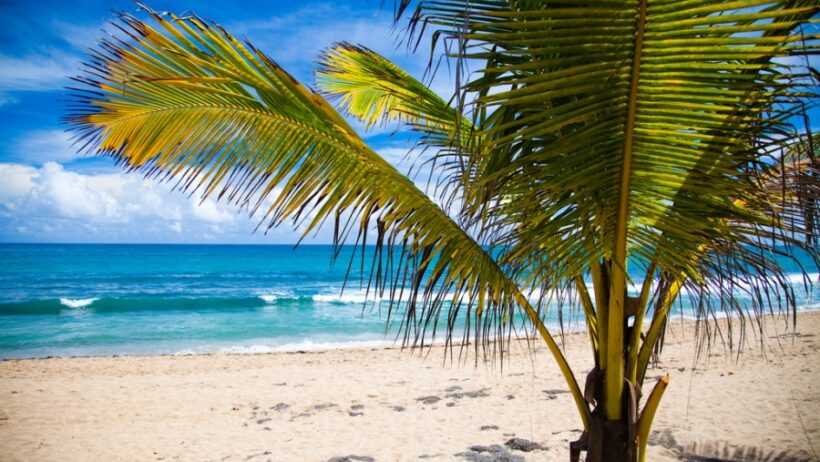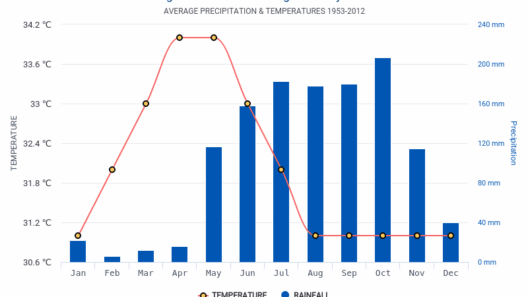Palm-fringed shores, azure waters, and an enticing blend of vibrant cultures characterize the enchantment of Puerto Rico. However, beyond its picture-perfect postcards, there exists a complex tapestry of climate intricacies that govern the island’s weather patterns. This article unveils Puerto Rico’s climate secrets, illuminating how its tropical sunshine comes with a twist, and prompting a shift in perspective that might just reshape your understanding of this breathtaking locale.
Puerto Rico is nestled in the Caribbean, positioned approximately 1,000 miles southeast of Miami, Florida. Its geographical placement means it experiences a tropical maritime climate, predominantly categorized by warm temperatures and varying degrees of humidity. However, the island’s climatic narrative is not as straightforward as it may seem. The interplay between its topography and oceanic influences gives rise to microclimates, delivering a diverse array of weather conditions across short distances.
The island benefits from a warm tropical climate with average temperatures fluctuating between 70°F and 85°F (21°C to 29°C) throughout the year. While the warmth is remarkably consistent, this seeming uniformity conceals a range of climatic phenomena intricately woven into the island’s fabric. The interplay of trade winds, ocean currents, and topographical elevation creates a dynamic environment, resulting in climatic zones that can change dramatically just within a span of a few miles.
Puerto Rico is bifurcated by a central mountain range, the Cordillera Central, which plays a vital role in influencing local weather patterns. The eastern and northern coasts enjoy wetter conditions, averaging about 80 inches of rain annually, while the western and southern regions are considerably drier, with some areas receiving as little as 30 inches of rainfall. The variance can often lead to quick shifts in weather that tourists might not anticipate, transforming a pleasantly warm afternoon into a sudden downpour.
These climatic dichotomies bring forth an essential topic: the rainy season. An astute observer will note that Puerto Rico experiences two distinct seasons—dry and wet—though even categorizing them can be misleading. The wet season spans from April to November, coinciding with the Atlantic hurricane season. Nevertheless, this does not suggest incessant downpours; rather, it implies sporadic and intense rainfall, typically occurring in short bursts followed by sunshine. This cycle not only nourishes the lush vegetation that blankets the island but also creates a unique ecological environment.
Moreover, understanding the seasons in Puerto Rico requires a shift in perception—where tourists often despair at the thought of rain ruining their tropical escape, locals embrace the showers as a natural rhythm of life. In fact, the rain nourishes the island’s diverse ecosystems, fueling the growth of the famed tropical rainforests, such as El Yunque. It is this juxtaposition—the cheerful warmth interspersed with unexpected showers—that cultivates a vivid landscape, providing a host of ecological benefits and contributing to the island’s unique biodiversity.
The phenomenon of hurricanes further complicates Puerto Rico’s climate narrative. While the island is annually vulnerable to cyclical storms, these hurricane events have catalyzed significant shifts in the ecosystem, landscape, and communities. Meteorological experts assert that climate change is intensifying storms, leading to more severe weather patterns. This escalating intensity has far-reaching implications—not merely for the population and infrastructure but for the natural ecosystems that evolved over centuries.
Importantly, the island’s tropical climate is also affected by rising sea temperatures and changing oceanic conditions. Some ecosystems, particularly coral reefs, are particularly at risk from increased temperatures and ocean acidification. As hot water bleaches corals, the biodiversity they support undergoes profound changes, affecting not only marine life but also local tourism economies that rely on healthy oceanic ecosystems. Understanding these interactions is paramount for both inhabitants and visitors aiming to foster a deeper relationship with Puerto Rico.
In light of these climatic realities, the question arises: how should tourism adapt to this intricate climatic fabric? Sustainable tourism practices are imperative. Visitors must endeavor to tread lightly, embodying respect that acknowledges both the beauty and fragility of this island paradise. Travelers should not only seek to bask in the sunshine, but should also embrace the changing weather as a part of Puerto Rico’s dynamic identity. Considerations such as patronizing eco-friendly lodging, participating in guided environmental tours, and supporting local conservation efforts can amplify the positive impact of visitation while enabling a deeper understanding of the island’s unique environmental challenges.
Engaging with Puerto Rico’s climate secrets offers an enlightening glimpse into the island’s ecological complexity. It invites admiration and respect for the dynamic interplay of weather patterns that shape both the landscape and local culture. Beyond the sun-soaked beaches and vibrant nightlife lies a narrative that is intricate, yet deeply woven into the identity of Puerto Rico. Embracing this narrative fosters an enriched experience, transforming a mere vacation into a profound exploration of nature’s tenacity and beauty.
Ultimately, to enjoy Puerto Rico is to embrace its inherent complexities—accepting the unexpected rains as an integral part of its charm, recognizing the underlying battles against climate change that impact its ecological future, and understanding that tourism, when approached consciously, has the power to contribute positively towards preserving this tropical haven for generations to come. Welcome to Puerto Rico, where every shower holds a story, and every ray of sunshine reveals a new secret.








